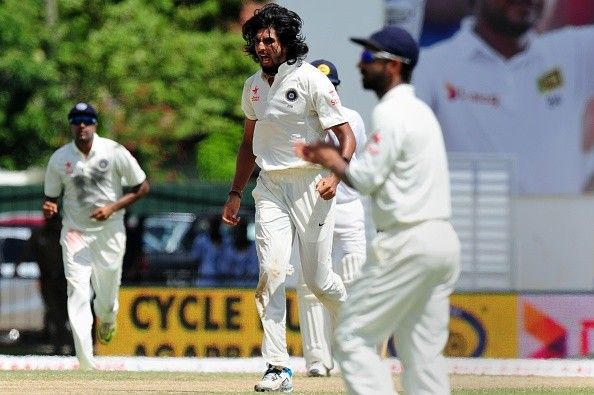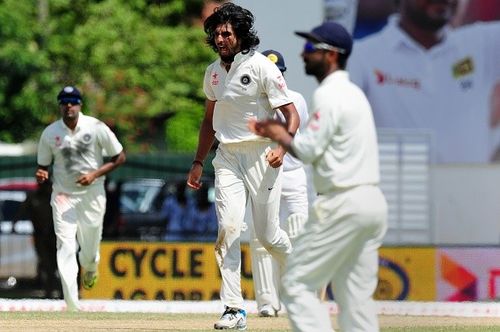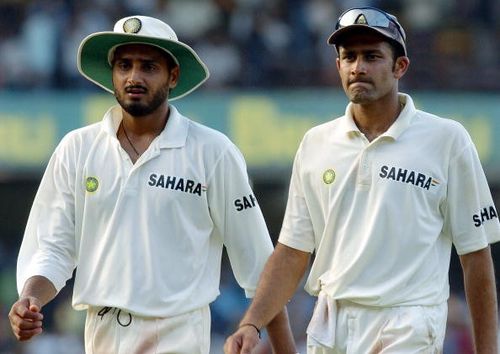
Why India need to encourage their spinners to carry out the clean up job

India wrapped up their first series win in Sri Lanka by clinching the third and final Test by a margin of 117 runs at the Sinhalese Sports Club on Tuesday. It was a professional performance from Virat Kohli and his men, who put up an excellent show with both bat and ball, on a pitch, which had juice on almost all 5 days.
Led by a resilient comeback effort from Cheteshwar Pujara and vital half-century from Amit Mishra, India put up a more than decent score in their first innings and then returned with the ball to reduce the hosts to 47 for 6.
However, a familiar demon returned to haunt the team thereafter - the lower order demon. Despite having the hosts in dire straits, India failed to pick up the remaining four wickets as quickly as they took the top six scalps, thereby letting them off the hook and helping them eventually reach the 200-run mark which they looked highly unlikely of reaching at one point.
This issue of finding it difficult to knock the lower order off cheaply has been haunting Indian cricket for ages. In fact, if ones goes down memory lane, you will see that this problem began from the team's first ever Test match in 1932, where, in the first innings, they let England got from 19 for 3 to 259 all out in their first innings and then 67 for 4 in their second innings to 275 for 8 declared.
So what can India do to sort out this issue? History shows us that Indian spinners have been the more effective as compared to the fast bowlers when it boils down to picking up the lower-order batsman.
The Kumble-Harbhajan partnership - chief destroyer of lower-order during their time
India were extremely lucky to have had the likes of Anil Kumble and Harbhajan Singh (at his prime) wrap up the tail quickly and ensure the team benefited immensely out of that.
In the famous Headingley Test win of 2002, England found themselves 239 for 4, following on, at the end of Day 4 with Nasser Hussain not out on 90 and Alec Stewart giving him company on 40.
On the fifth morning, Kumble first removed Hussain for 110 and then Stewart for 47 to leave placed at 267 for 6.

Harbhajan too then joined the party as India took the remaining four wickets to bowl England out for 309 and win by an innings and 46 runs.
Another instance when the spinners played a vital role while cleaning up the innings quickly was in the 2010 Kolkata Test against South Africa when they took the last 5 South African wickets for 43 runs to bowl them out for 296 after they were 253 for 5 at one stage. Harbhajan and Amit Mishra doing the damage, on that occasion.
The reason why I think India need to encourage someone like an R Ashwin to bowl at the lower order is because the off-spinner is bowling in a manner which would entice the batsman to go for the big shot.
Ashwin has reduced his use of carrom ball to absolute minimal and instead, the conventional off-break has become his stock delivery.
Add some flight to that and what do you get? You get the batsman deceived in the flight, which leads to a mistimed shot and with more fielders inside, it results in greater chances of the ball going to a fielder's hands.
Compare the same situation to a fast bowler bowling... Now, no Indian bowler, barring probably Stuart Binny and Bhuvneshwar Kumar, bowl under 135 kph, which means if the lower-order swings at a ball, there are chances of the ball flying over the slips cordon if the length is short due to the speed of the ball and with India reluctant to keep a third man on most occasions, it results in a boundary.

The upcoming South Africa series will pose a much bigger test for the Indians as compared to the one in Sri Lanka and with the Proteas having the likes of Vernon Philander, Dale Steyn in their lower order, it is imperative that India resolve this issue soon.